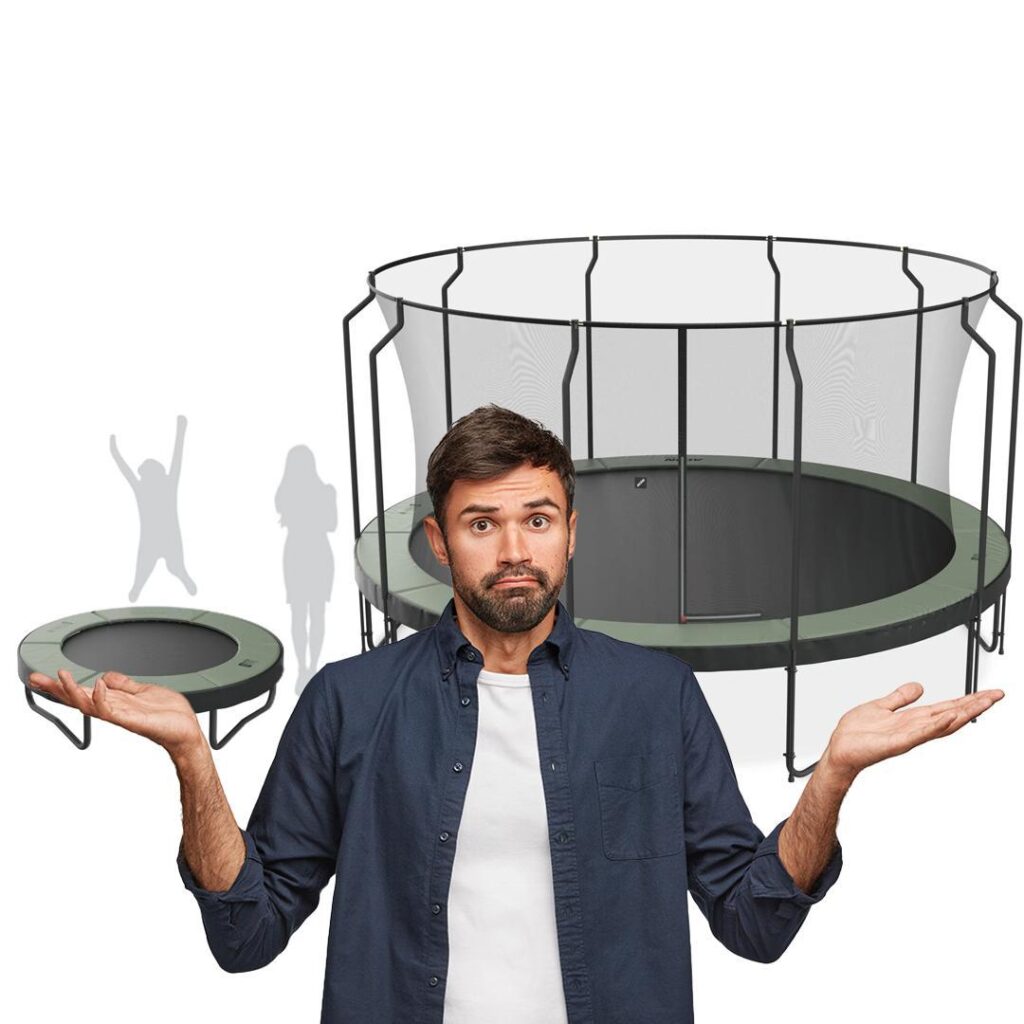
Selecting the ideal trampoline isn’t just about fun; it’s also about safety, space, and suitability for different ages. Whether you’re outfitting your backyard for a small child’s playful jumps or creating an exercise regimen for adults, finding the right trampoline involves understanding several key factors. This guide will provide you with a detailed, step-by-step approach to choose a trampoline that promises both safety and excitement for every age group. Let’s jump right in and discover how to make an informed choice that will keep the bounce in your step and your loved ones entertained for years to come!
Step 1: Understanding Different Age Group Needs
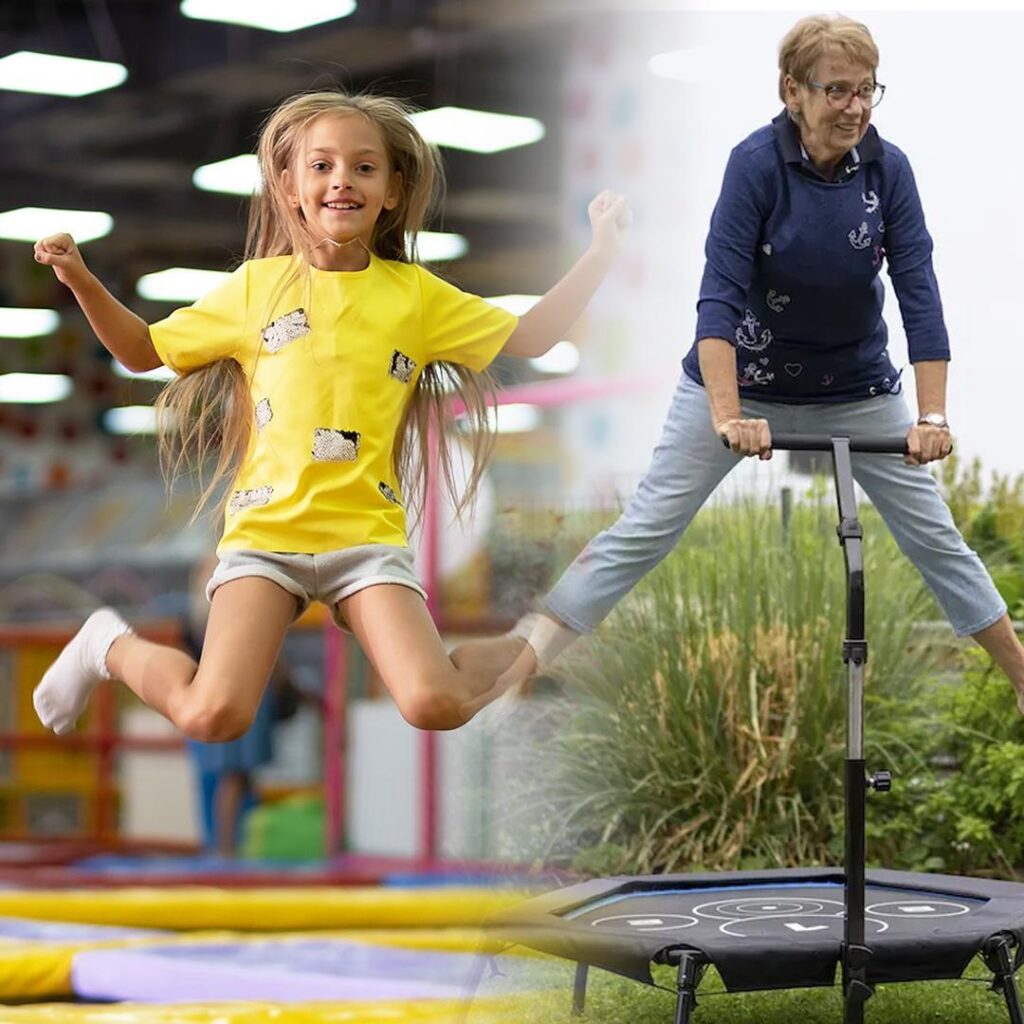
Selecting the right trampoline involves understanding the specific requirements and safety concerns of each age group. Here’s how to choose the best option for toddlers, older children, teenagers, and adults:
Young Children
- Safety First: Look for trampolines with robust safety nets, low heights for easier access, and soft padding that covers all springs and frames to prevent injuries.
- Size Matters: Opt for smaller trampolines, which not only fit better in limited spaces but are also scaled appropriately for little jumpers.
Older Children (6-12 years)
- Go Bigger: At this age, children have better coordination and a need for more space. Consider medium-sized trampolines (around 8-12 feet in diameter) that offer plenty of room for energetic play.
- Durability is Key: Ensure the trampoline can withstand the increased activity of this age group with a sturdier frame and higher-quality materials.
Teenagers
- Support and Space: Teenagers often use trampolines for more adventurous maneuvers like flips and tricks. Look for large, rectangular trampolines that provide the necessary space and even bounce needed for these activities.
- Weight Capacity: Make sure the trampoline supports heavier weights, accommodating both single teenagers and multiple users safely.The weight limitations on most conventional trampolines range from 200 to 400 pounds.
- Consider activity level: When choosing the size, consider how the trampoline will be used. Larger sizes that accommodate a greater range of motion should be taken into consideration if adults intend to utilize the trampoline for fitness exercises. Conversely, a garden trampoline can work just fine if it’s going to be used largely for leisure jumping.
- Size matters: Larger trampolines are better for accommodating adult users and provide more room for uncontrolled bouncing. In instance, rectangular trampolines have greater surface area than circular ones, which makes them perfect for adults who like to execute stunts and more difficult maneuvers.
Adults
- Fitness Focus: Adults often use trampolines for exercise as well as fun. Choose models designed for workouts, such as those with included accessories like resistance bands or exercise apps.
- Low-impact options: Seek out trampolines with features like bungee cords or softer springs that are specifically made for low-impact training. Seniors with joint pain or mobility concerns can benefit from the softer bounce of these trampolines, which lowers their risk of strain or damage.
- Stability and support: For extra stability and support, give preference to trampolines with wide bases, solid frames, and safe railings. When bouncing, these qualities give seniors comfort and confidence, especially for those who struggle with balance or movement.
- High Weight Capacity: Adult trampolines need to have a high weight limit to support heavier weights, ensuring durability and stability during use.
- Product recommendation: In- ground trampolines
Before buying a trampoline it’s essential to ask the right question to ensure safety, quality and suitability for your needs. Learn more
Step 2: Choosing the Right Size
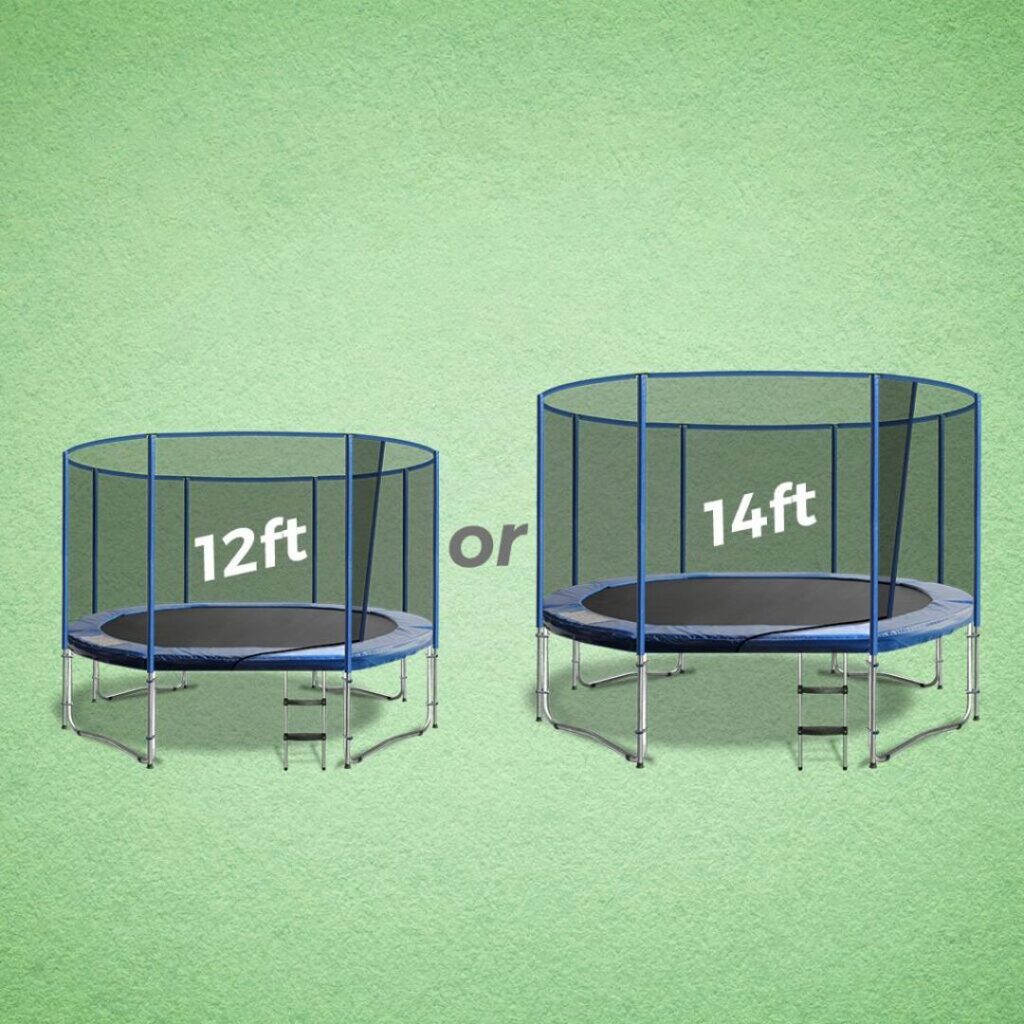
Selecting the correct trampoline size is crucial not just for the user’s experience but also for safety. Here’s how to ensure you pick the right size for your yard and your needs:
Measuring Your Space
- Identify the Location: Choose a flat area in your yard away from overhead obstacles like branches and away from structures, walls, or fences.
- Measure the Area: Using a tape measure, determine the length and width of the space where you plan to place the trampoline. Remember, you need adequate room not only for the trampoline itself but also for a safety zone around it.
- Safety Clearance: Ensure there’s at least 6 feet of unobstructed space around all sides of the trampoline. This area should be clear of any garden furniture, debris, or other obstacles.
Impact of Size on Safety and Performance
- Safety Considerations: A trampoline that’s too large for its designated area can pose serious safety risks, as jumpers could collide with nearby obstacles if they fall off. Conversely, a trampoline that’s too small may not effectively support the user’s weight or allow enough room for safe jumping.
- Performance Factors: The size of the trampoline will affect the type of activities that can be safely performed. Larger trampolines offer more room, making them suitable for flips and tricks, especially for older children and adults. They tend to have a better bounce due to more springs, which enhances performance.
- Age and Usage: Smaller trampolines might be suitable for younger children or those using them for light exercise, whereas larger trampolines are better for families, teenagers, or anyone looking to perform more dynamic movements.
Adjusting for specific activities:
- Gymnastics and Acrobatics: Larger rectangular trampolines with lots of surface area should be considered if the trampoline will be utilized for gymnastics or acrobatic routines. There is greater space on these trampolines for safe flips, twists, and aerial tricks.
Product recommendation: Kangaroo Performance Garden Trampoline
- Fitness workout: When choosing a trampoline for your training, make sure it has enough room for dynamic motions if you’re a fitness enthusiast. Fitness trampolines offer more space for aerobic workouts like high knees and jumping jacks.
Product recommendation: PT Bouncer™ Professional 40″ Fitness Rebounder
- Recreational Jumping: Select a size for the trampoline that will accommodate the number of users and guarantee safety while playing if it will be used mostly for backyard fun and casual bouncing. Round trampolines are a common leisure choice because of their soft bounce and large jumping surface.
Product recommendation: 11 x 8ft Primus Flat Rectangular Trampoline
- Therapeutic Use: Additionally, trampolines are utilized for therapeutic activities like sensory integration exercises and rebound therapy. For extra support and safety in these situations, think about using smaller trampolines with height-adjustable bars and stability.
Step 3: Selecting the Shape
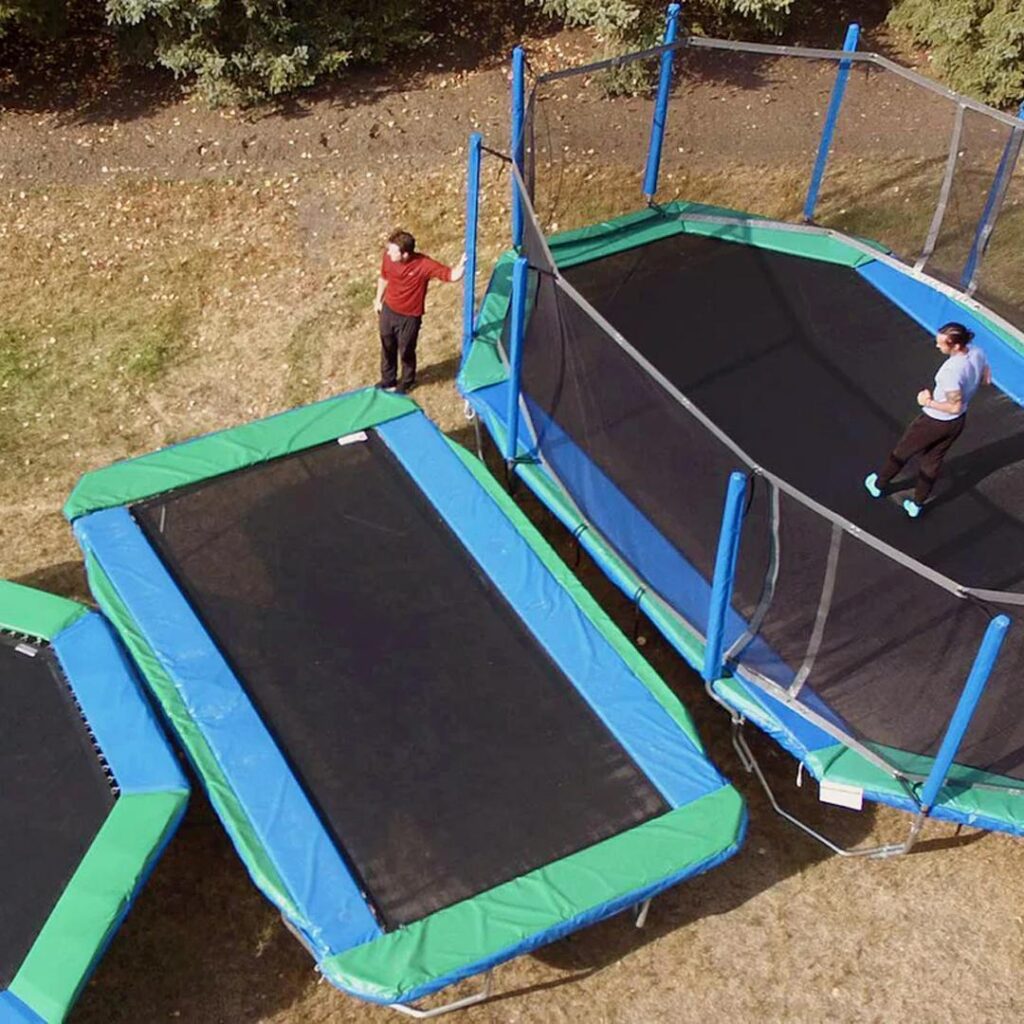
The shape of the trampoline greatly influences its bounce characteristics and how it fits into your space. There are primarily two shapes to consider: round and rectangular. Each has unique benefits suited for different users and activities.
Round Trampolines
- Benefits:
- Safety: Round trampolines are designed to naturally redirect the jumper towards the center after each bounce, reducing the risk of landing on the springs or edges. This makes them ideal for younger children or beginners.
- Space Efficiency: Their circular design can often fit better into smaller or irregularly shaped yards.
- Cost-Effectiveness: Generally, round trampolines are less expensive than their rectangular counterparts, making them a good choice for budget-conscious buyers.
- Best Use Cases:
- Recreational Use for Families: Perfect for younger families who want a trampoline for leisurely use and exercise.
- First-Time Owners: New trampoline owners often benefit from the forgiving nature of the circular design.
- Product recommendation: Orbit 12ft In-ground Trampoline
Rectangular Trampolines
- Benefits:
- Even Bounce: Unlike round trampolines, rectangular options provide a consistent bounce across the entire surface. This is due to the varying lengths of the springs, which allow parts of the trampoline to handle more force.
- Performance: They are preferred by gymnasts and serious jumpers as they provide a higher, more controlled bounce that is predictable, making it easier to perform flips and tricks.
- Why They Might Be a Better Choice for Serious Jumpers:
- Space Utilization: The rectangular shape allows for a more efficient use of space, which is crucial in competitive jumping or training environments.
- Higher Weight Capacity and Durability: Generally, rectangular trampolines are built to withstand more intensive use and higher weights, accommodating advanced maneuvers and heavier users.
- Product recommendation: Orbit 11 x 8ft Rectangular Trampoline
Step 4: Assessing Safety Features
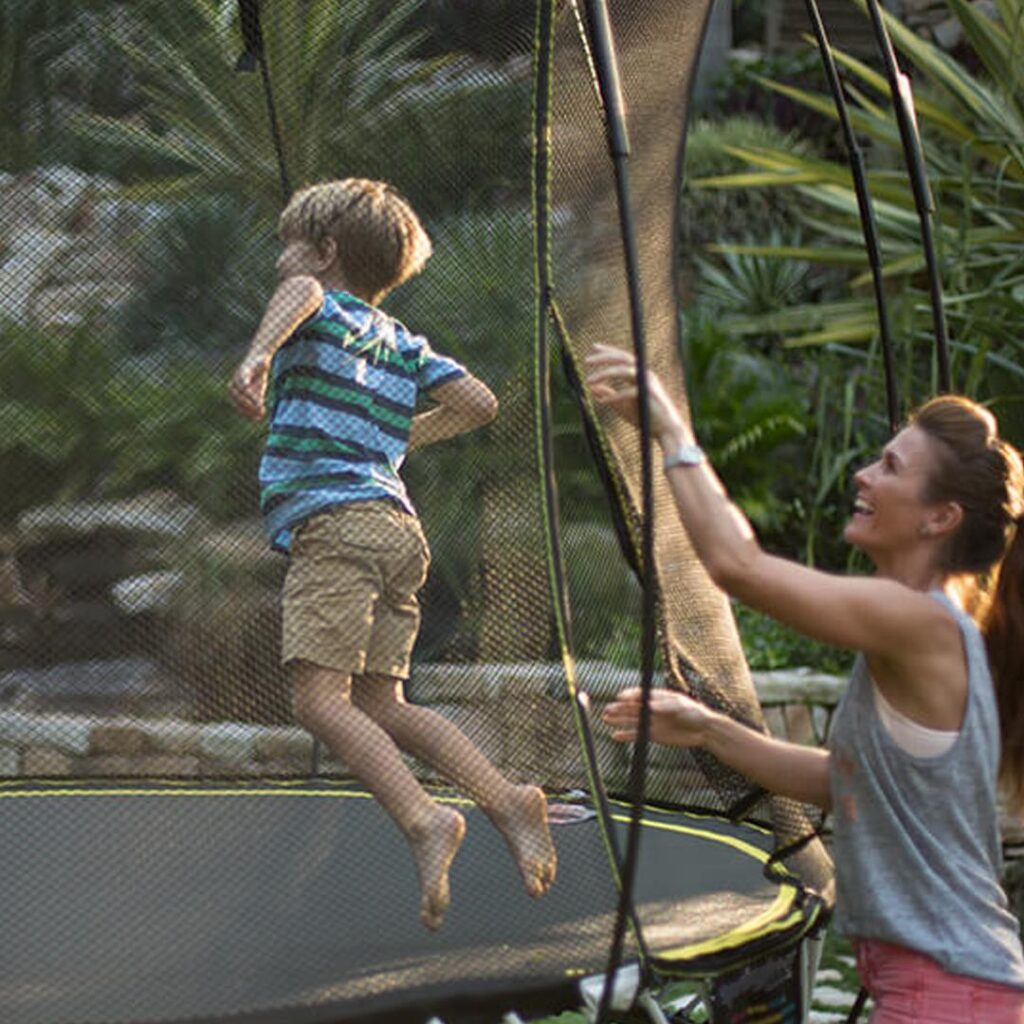
When choosing a trampoline, safety should be your top priority. Quality safety features not only protect jumpers from common injuries but also extend the lifespan of the trampoline itself. Here are the key safety features to consider:
Safety Nets
- Importance: Safety nets are crucial for preventing jumpers from falling off the trampoline, which is one of the most common causes of injury. They create a secure enclosure and provide peace of mind, especially for parents.
- What to Look For:
- Height and Strength: Ensure the net is tall enough to prevent jumpers, even when fully airborne, from going over the top. The netting should be made from durable, weather-resistant material.
- Secure Attachment: The net should attach securely both at the edge of the trampoline and along the support poles, with no gaps through which a person could slip.
- Easy Access: Look for nets with a well-designed, secure entry and exit point that remains firmly closed during use.
Spring Covers and Padding
- Necessity for Preventing Injuries: Spring covers and padding protect jumpers from pinching and other injuries by covering the springs, which are hard and can be hazardous upon impact.
- Essentials to Check:
- Full Coverage: Ensure that all springs are fully covered with no exposure.
- Thick Padding: The padding should be thick and made from high-quality, weather-resistant materials to endure wear and tear.
Frame Quality
- How to Assess Durability and Stability:
- Material: The frame should be made of galvanized or powder-coated steel to resist rust and corrosion, especially if the trampoline will be outdoors.
- Construction: Check for a sturdy frame design that doesn’t wobble or shake during use. Larger diameter tubes and more robust welds indicate better quality.
- Leg Design: The number and style of legs can impact stability. More legs usually mean a more stable base. Look for legs that provide a wide stance to avoid tipping.
Step 5: Additional Considerations
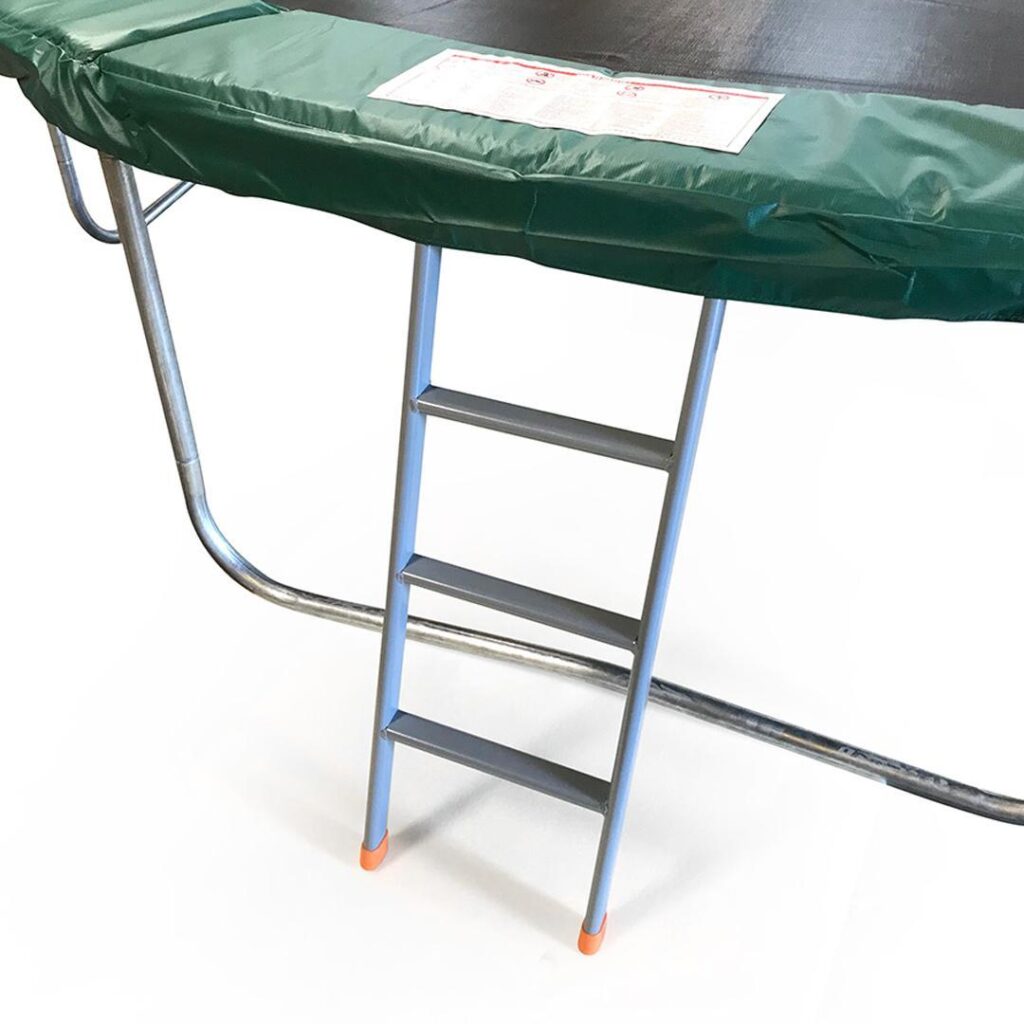
After assessing the safety features and the appropriate size and shape of your trampoline, there are a few more considerations to ensure you choose the best possible model for your needs. Here are key considerations:
Weight Limit
- Importance of Checking Weight Capacity: The weight limit is a critical specification as it ensures the trampoline can safely accommodate the weight of the users. Exceeding this limit can lead to damage to the trampoline and, more importantly, pose safety risks.
- Guidance: Always check the manufacturer’s stated weight capacity and consider the likely number of people who might use the trampoline simultaneously. This is especially important if the trampoline will be used by adults or multiple jumpers at once.
Warranty and Customer Support
- Why These Factors Matter:
- Warranty: A good warranty can protect your investment by covering defects and other issues that may not be apparent at the time of purchase. Look for warranties that cover the frame, mat, springs, and other components for extended periods.
- Customer Support: Reliable customer support means you can get help with assembly, maintenance tips, and troubleshooting..
Accessories
- Optional Additions:
- Ladders: A ladder is helpful, especially for younger children or shorter users, to safely enter and exit the trampoline.
- Weather Covers: These protect your trampoline from the elements, such as sun, rain, and leaves, which can extend the life of the mat and padding.
- Anchor Kits: If you live in an area prone to high winds or storms, an anchor kit is essential to prevent your trampoline from tipping over or blowing away.
Final Thought!
Selecting the right trampoline involves understanding the needs of different age groups, accurately measuring your available space, and choosing the correct size and shape for both safety and performance. It’s essential to evaluate trampolines for robust safety features like nets, spring covers, and sturdy frames, while also considering weight limits and optional accessories.
Whether purchasing online or in-store, consider delivery options and the potential need for professional assembly. Above all, encourage safe jumping practices and conduct regular maintenance checks to keep your trampoline in prime condition for years of fun and fitness.


